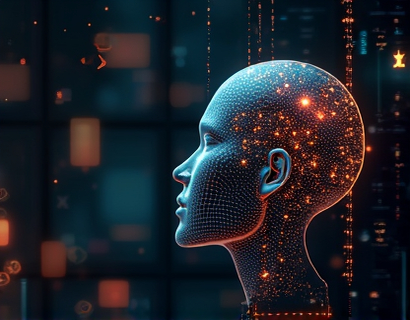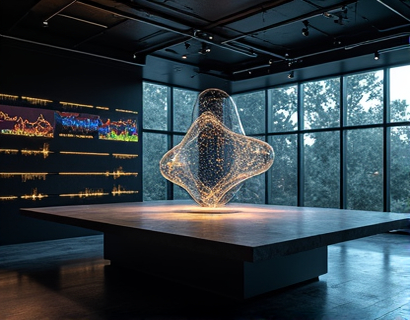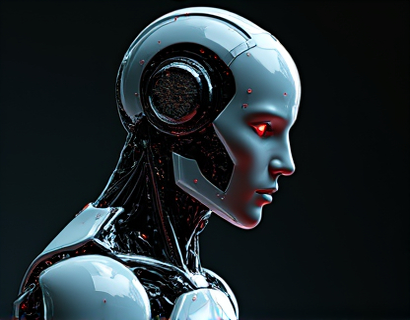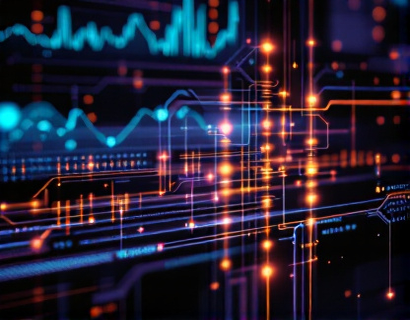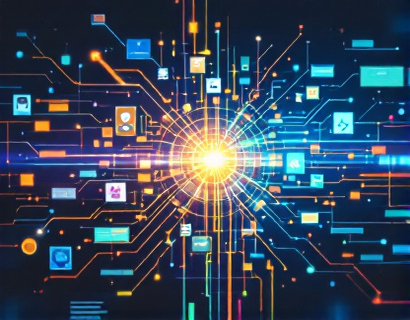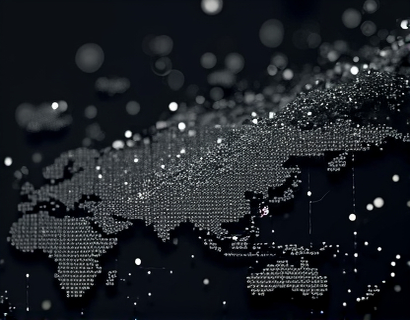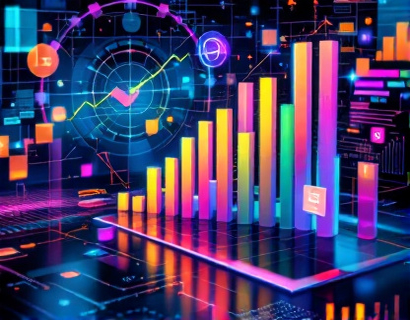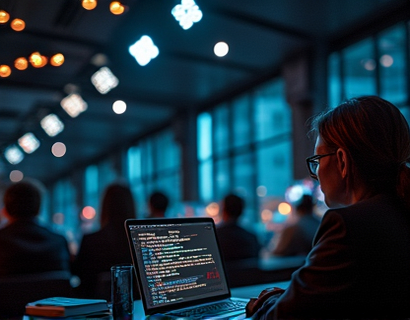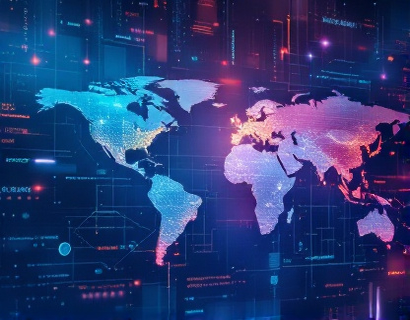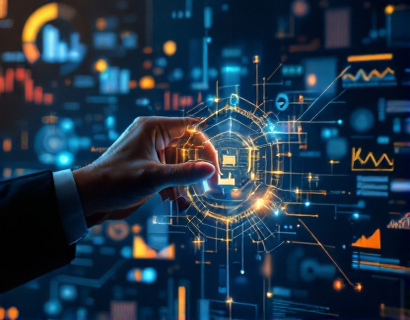Transforming Productivity in the Digital Age: The Synergy of Crypto and AI
The intersection of cryptocurrency and artificial intelligence (AI) is revolutionizing the way we approach productivity in the digital realm. This synergy is not just a buzzword but a tangible force driving innovation and efficiency across various sectors. For tech enthusiasts and digital visionaries, understanding this powerful combination is crucial to staying ahead in an increasingly complex and competitive landscape.
The integration of blockchain technology and AI is creating advanced digital solutions that streamline tasks, enhance security, and optimize resource utilization. These technologies, when combined, offer unprecedented opportunities for tech leaders and early adopters to redefine productivity norms. This article delves into the key areas where crypto and AI are making significant impacts, providing insights and examples that highlight their transformative potential.
Enhanced Security through Cryptographic Techniques
One of the most immediate benefits of combining crypto and AI is the enhancement of security measures. Blockchain's inherent cryptographic properties ensure that data is tamper-proof and transparent, while AI can detect and mitigate potential threats in real-time. This dual-layer security approach is particularly valuable in industries handling sensitive information, such as finance, healthcare, and government.
For instance, AI-driven security systems can analyze patterns and anomalies in blockchain transactions, identifying suspicious activities that traditional methods might miss. This proactive approach not only protects against cyber threats but also builds trust among users, fostering a more secure digital environment. The result is a more reliable and secure platform for conducting transactions and storing data, which is essential for maintaining productivity in a world where data breaches and cyber attacks are increasingly common.
Optimized Data Processing and Analysis
AI's strength lies in its ability to process and analyze vast amounts of data quickly and accurately. When combined with the immutable and decentralized nature of blockchain, the potential for data-driven decision-making becomes even more potent. AI algorithms can sift through blockchain data to extract meaningful insights, predict trends, and automate complex tasks.
In the context of business operations, this means more efficient data management and analysis. For example, supply chain management can benefit greatly from AI-powered analytics on blockchain-verified data, ensuring transparency and traceability at every step. This not only optimizes logistics but also reduces costs and improves overall efficiency. Tech leaders can leverage these tools to make informed decisions, streamline processes, and maintain a competitive edge.
Automated Smart Contracts and Workflow Efficiency
Smart contracts, self-executing contracts with the terms directly written into code, are a prime example of how crypto and AI can enhance productivity. These contracts automatically trigger actions when predefined conditions are met, eliminating the need for intermediaries and reducing administrative overhead. AI can further optimize smart contracts by predicting potential issues, suggesting improvements, and ensuring compliance with regulatory requirements.
In business workflows, smart contracts can automate routine tasks such as invoicing, payment processing, and contract enforcement. This automation not only speeds up processes but also minimizes human error, leading to higher productivity and accuracy. For tech enthusiasts, the ability to integrate AI with smart contracts opens up new possibilities for creating intelligent, self-managing systems that can adapt to changing conditions in real-time.
Decentralized Applications and Collaboration
Decentralized applications (dApps) powered by blockchain and AI are redefining how users collaborate and interact in digital spaces. These applications run on decentralized networks, ensuring that no single entity has control over the entire system. AI enhances this model by providing intelligent recommendations, personalized user experiences, and automated moderation.
For example, in content creation and sharing platforms, AI can curate and recommend high-quality content based on user preferences and engagement patterns. This not only improves the user experience but also encourages more meaningful interactions and collaborations. Tech leaders can explore the development of dApps that leverage AI to foster innovation and community engagement, creating ecosystems that are both secure and highly productive.
Tokenization and Incentivization
Tokenization, the process of converting assets into digital tokens on a blockchain, is another area where crypto and AI intersect to boost productivity. Tokens can represent various assets, from real estate and art to digital content and services. AI can optimize token distribution, manage token economies, and incentivize desired behaviors within a system.
In the context of productivity, tokenization can be used to create token-based reward systems for employees or contributors. AI can analyze performance data and automatically issue tokens as incentives, ensuring that rewards are fair and aligned with goals. This not only motivates individuals but also provides a transparent and efficient way to manage incentives, leading to higher overall productivity and job satisfaction.
Predictive Maintenance and IoT Integration
In the realm of Internet of Things (IoT) devices, the combination of AI and blockchain offers transformative solutions for predictive maintenance. IoT devices generate massive amounts of data, which AI can analyze to predict equipment failures and optimize maintenance schedules. Blockchain ensures that this data is secure and tamper-proof, providing a reliable foundation for predictive analytics.
For tech leaders managing complex IoT networks, this synergy means reduced downtime, lower maintenance costs, and improved operational efficiency. AI-driven insights can identify potential issues before they become critical, allowing for proactive maintenance. This not only enhances productivity but also extends the lifespan of equipment, providing a cost-effective and sustainable approach to asset management.
Challenges and Considerations
While the potential benefits are significant, integrating crypto and AI also comes with challenges. Regulatory uncertainties, technical complexity, and the need for skilled professionals are among the key considerations. Tech enthusiasts and leaders must stay informed about regulatory developments and invest in building a knowledgeable team to navigate these challenges effectively.
Additionally, the energy consumption associated with blockchain, particularly proof-of-work systems, is a concern that needs to be addressed. Exploring more sustainable consensus mechanisms and integrating AI to optimize energy usage can help mitigate this issue. By adopting responsible practices, the tech community can ensure that the growth of crypto and AI is both innovative and environmentally conscious.
Conclusion
The synergy between cryptocurrency and AI is a powerful force driving productivity and innovation in the digital age. By enhancing security, optimizing data processing, automating workflows, enabling decentralized collaboration, tokenizing assets, and improving IoT management, this combination offers a wide range of benefits for tech leaders and digital visionaries. As the landscape continues to evolve, staying informed and adaptable will be key to harnessing the full potential of these transformative technologies.





